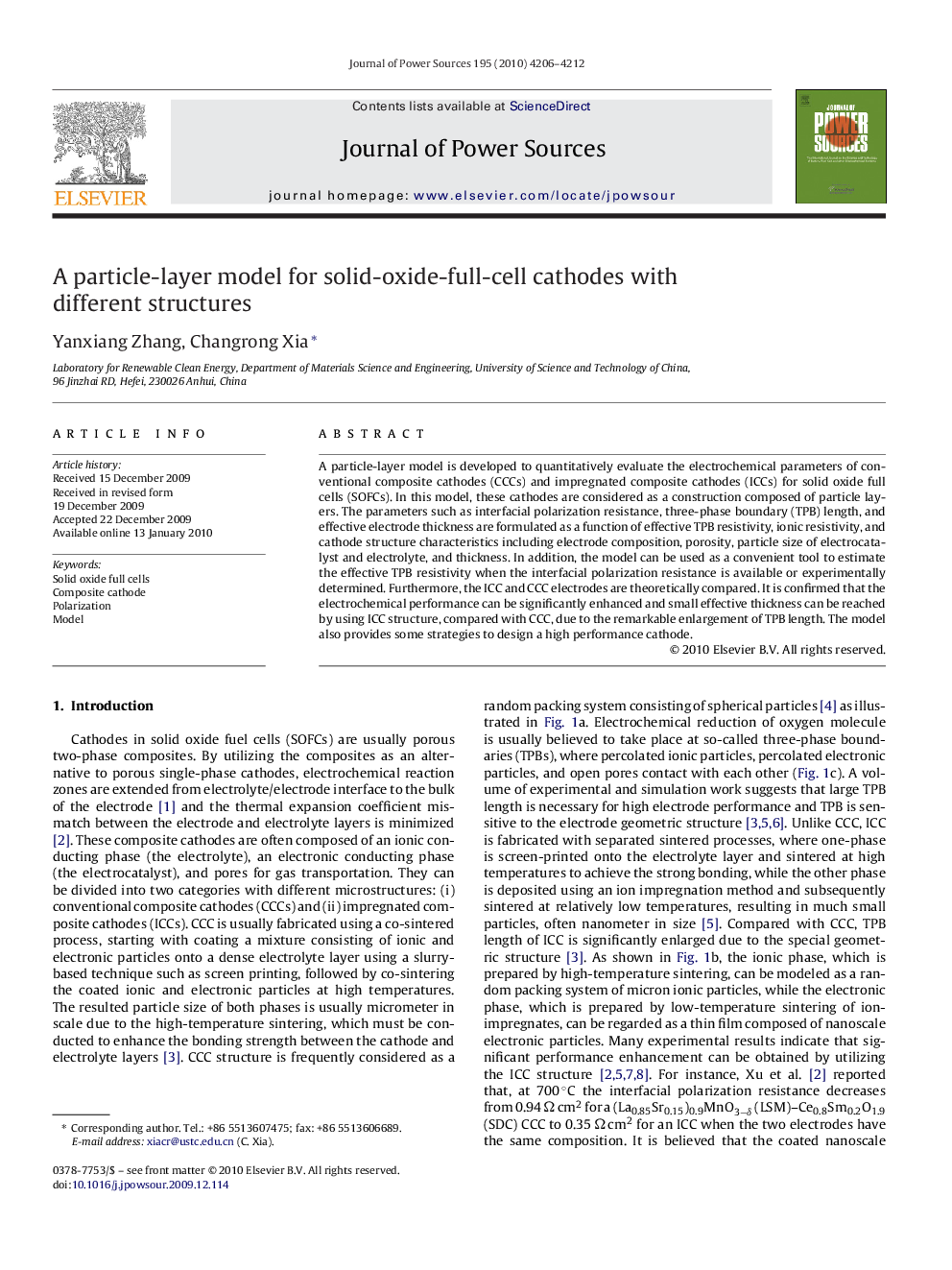| Article ID | Journal | Published Year | Pages | File Type |
|---|---|---|---|---|
| 1290349 | Journal of Power Sources | 2010 | 7 Pages |
A particle-layer model is developed to quantitatively evaluate the electrochemical parameters of conventional composite cathodes (CCCs) and impregnated composite cathodes (ICCs) for solid oxide full cells (SOFCs). In this model, these cathodes are considered as a construction composed of particle layers. The parameters such as interfacial polarization resistance, three-phase boundary (TPB) length, and effective electrode thickness are formulated as a function of effective TPB resistivity, ionic resistivity, and cathode structure characteristics including electrode composition, porosity, particle size of electrocatalyst and electrolyte, and thickness. In addition, the model can be used as a convenient tool to estimate the effective TPB resistivity when the interfacial polarization resistance is available or experimentally determined. Furthermore, the ICC and CCC electrodes are theoretically compared. It is confirmed that the electrochemical performance can be significantly enhanced and small effective thickness can be reached by using ICC structure, compared with CCC, due to the remarkable enlargement of TPB length. The model also provides some strategies to design a high performance cathode.
